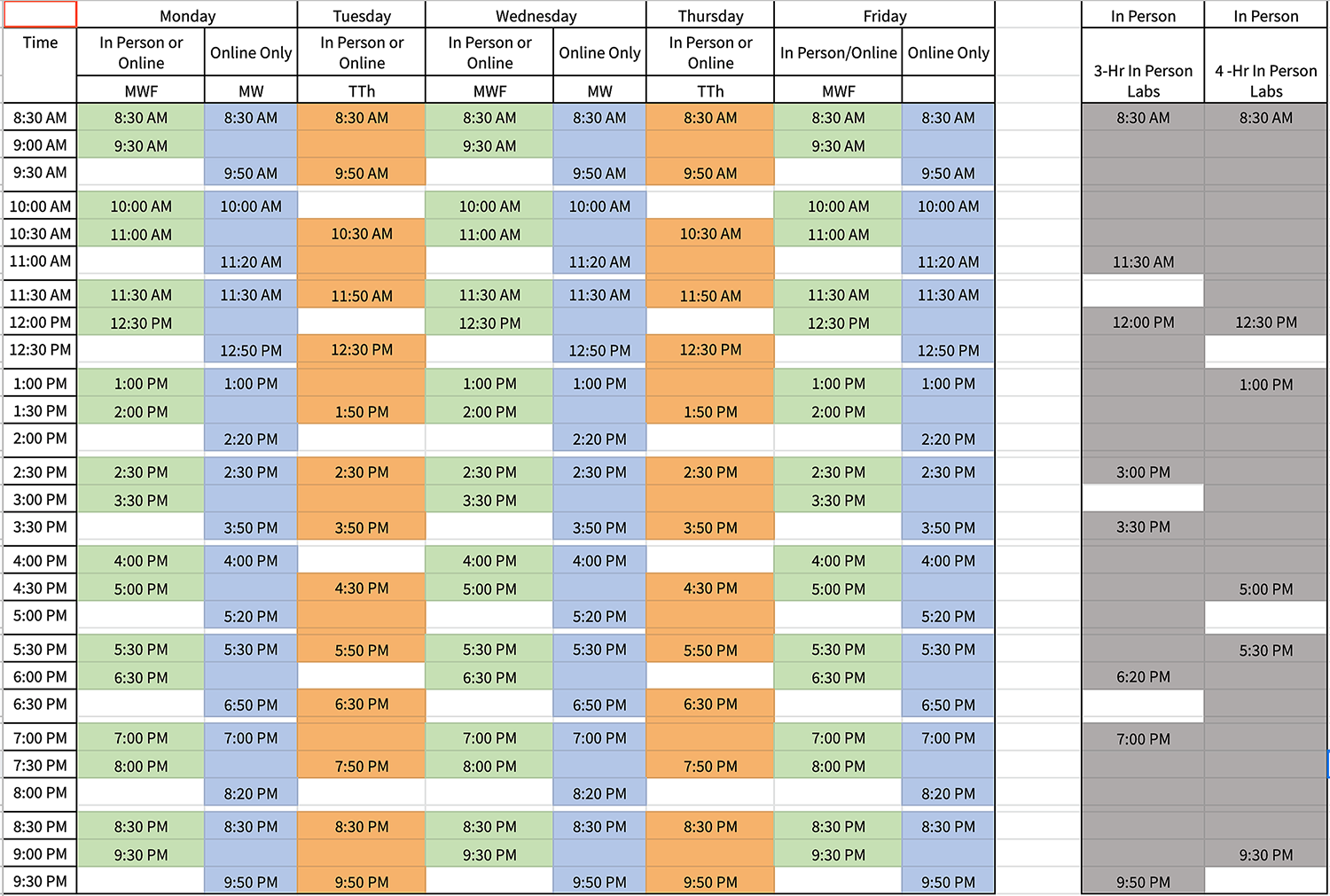On Thursday, the Faculty Senate Steering Committee approved the 2020-21 academic calendar dates and a daily course meeting schedule that will run from 8:30 a.m. to 9:50 p.m PT. These measures will reflect Stanford’s plan to house approximately half of the undergraduate population on campus each quarter.
Academic calendar
The calendar consists of four 10-week quarters, including a summer quarter. The dates have been adjusted to provide undergraduates more time to move in and out of campus housing each quarter and do not include a final exam period. Graduate and professional school programs with their own calendars are not subject to these dates.
“We expect move-in to take much longer than usual, both to allow physical distancing, and to accommodate likely testing, flu vaccinations, etc,” wrote recently appointed Vice Provost for Undergraduate Education Sarah Church and Senior Associate Dean for Educational Initiatives in the School of Humanities and Sciences Mary Beth Mudgett in the proposals.
Fall quarter, during which freshman and sophomores will be allowed on campus, will begin Sept. 14 and end Nov. 20. In June, the Steering Committee approved that early start date (which was originally a week later) in order to end the fall quarter before Thanksgiving Break and prevent the potential spread of COVID-19 that could occur by traveling back to campus after the break.
Initially, a remote final exam period was blocked out for Nov. 30 through Dec. 4, but the new changes have gotten rid of final exams, which should be instead replaced by “continuous assessment spread through the quarter, which could include several spaced take-home exams in place of a single final exam.”
Winter quarter will begin Jan. 11 and end March 19, giving students a seven-week break between fall and winter classes. Delaying the quarter by a week is intended to give the new cohort of juniors and seniors time to move into campus housing and “to accommodate any changes that may be needed in case of a winter surge in COVID-19 cases.”
Spring quarter will begin March 29 and end June 4. The shortened spring break is intended to “discourage juniors and seniors from leaving campus.”
Commencement will take place on Sunday, June 13, a week after the end of spring quarter. Church and Mudgett wrote that they were “instructed that the date of graduation could not change.”
Summer quarter will begin June 21 and end Aug. 27 in time to allow on-campus freshman and sophomores a September break before the 2021-22 academic year.
Final exams
Like spring quarter, the 2020-21 academic year will not have a formal final exam period. Church and Mudgett stated that the decision to use multiple formative assessments throughout the quarter rather than one summative assessment would “recognize challenges that students may experience in their remote learning environment.”
“It also recognizes the fact that the Stanford Honor Code was not written for a remote learning environment, and that it is difficult to replace the controlled environment of a 3-hr on-campus final exam with an unproctored take-home final that complies with the requirement to avoid undue temptation to cheat,” they wrote.
Course meeting times
The new course meeting pattern includes times for classes that encompass either in-person or online instruction and classes offered online-only, starting from 8:30 a.m. and extending to 9:50 p.m. Classes offered either in-person or online will have the same start times to accommodate on-campus students who may be taking a combination of both.
The pattern includes 30 minutes between in-person classes “to allow safe entry and exit of students from classroom spaces between classes and allows time for droplets to settle to reduce the likelihood of COVID-19 transmission.”
Classes which accommodate either in-person or online instruction will be offered for 60 minutes on Mondays, Wednesdays and Fridays and 80 minutes on Tuesdays and Thursdays. Online-only courses have the option of 80-minute classes on Mondays, Wednesdays and Fridays as well. The pattern also includes three- and four-hour blocks for in-person laboratory sessions.
Two- or three-hour online classes can be accommodated, but they are “discouraged due to Zoom fatigue.”
Once dining schedules are known, meal times may also be blocked out “so that students can safely access meals.”
Grading basis
Church and Mudgett also requested in the proposals that “the Senate Steering Committee and the Provost consult regarding the appropriate grading basis” for the academic year.
“If no action is taken to extend the S/NC basis that was in place in spring, then all courses will revert to regular grading options,” they wrote.
“The Faculty Senate is free to propose any policy it chooses, including a requirement that any course using letter grades as a grading basis be required to include a CR/NC option. Other options, such as adopting the Law School grading basis could also be considered,” wrote Church and Mudgett.
According to Church and Mudgett, they are “working with departments and schools to finalize course offerings by Aug. 1.”
Contact Esha Dhawan at edhawan ‘at’ stanford.edu.
